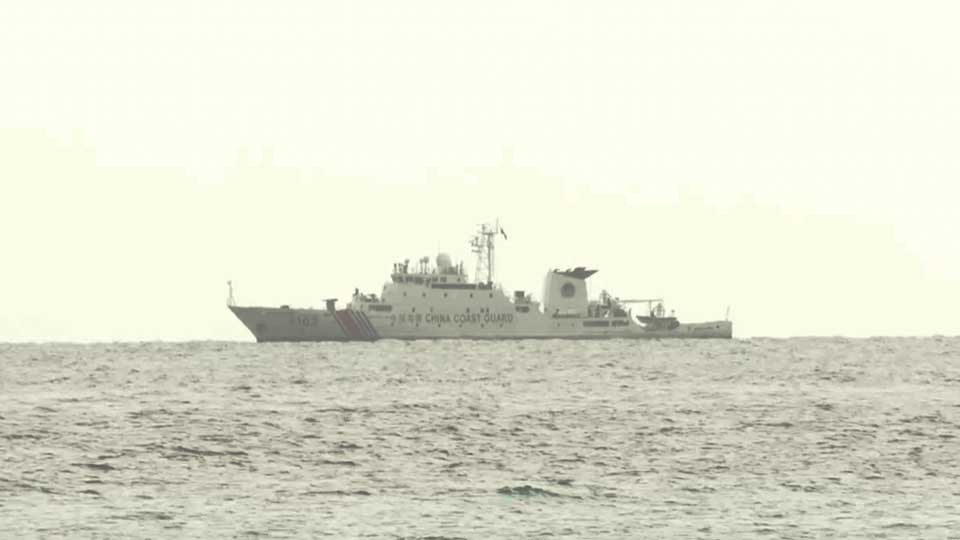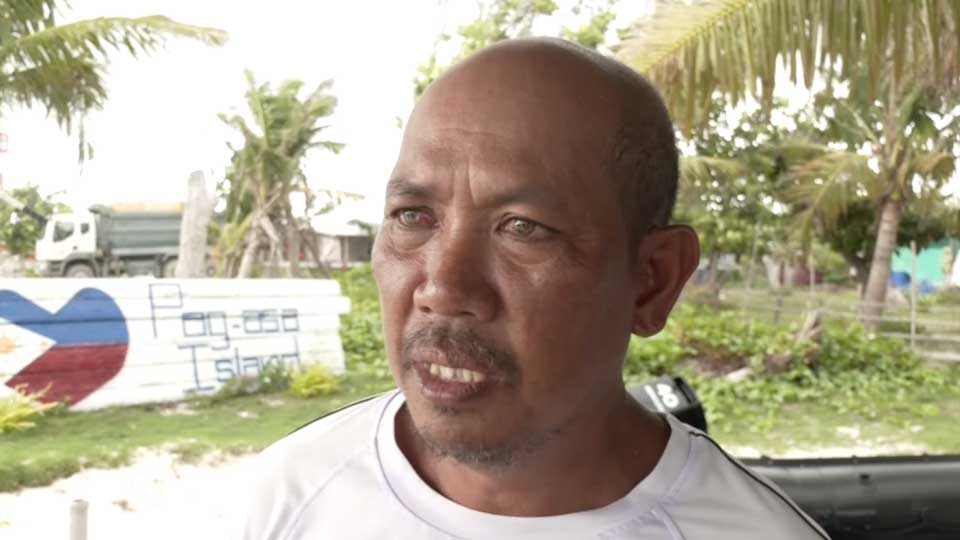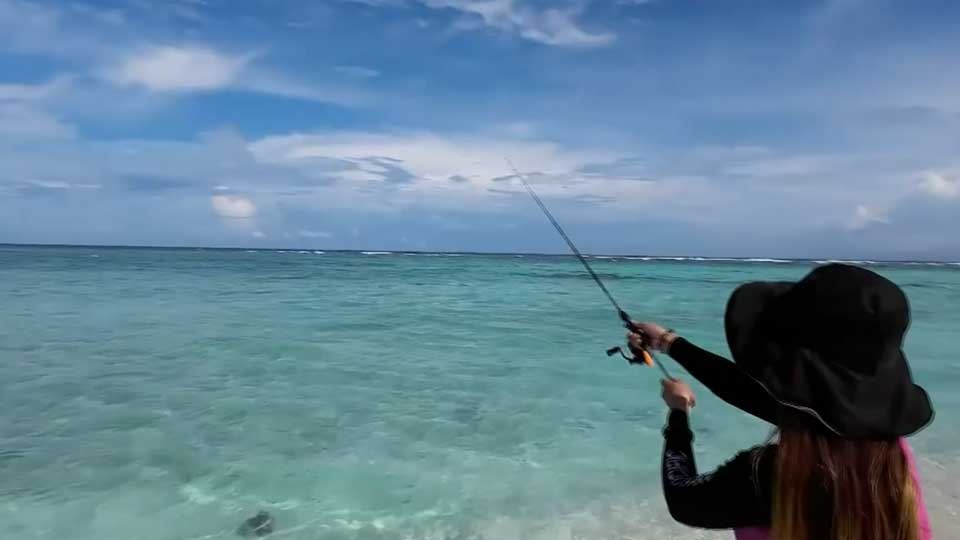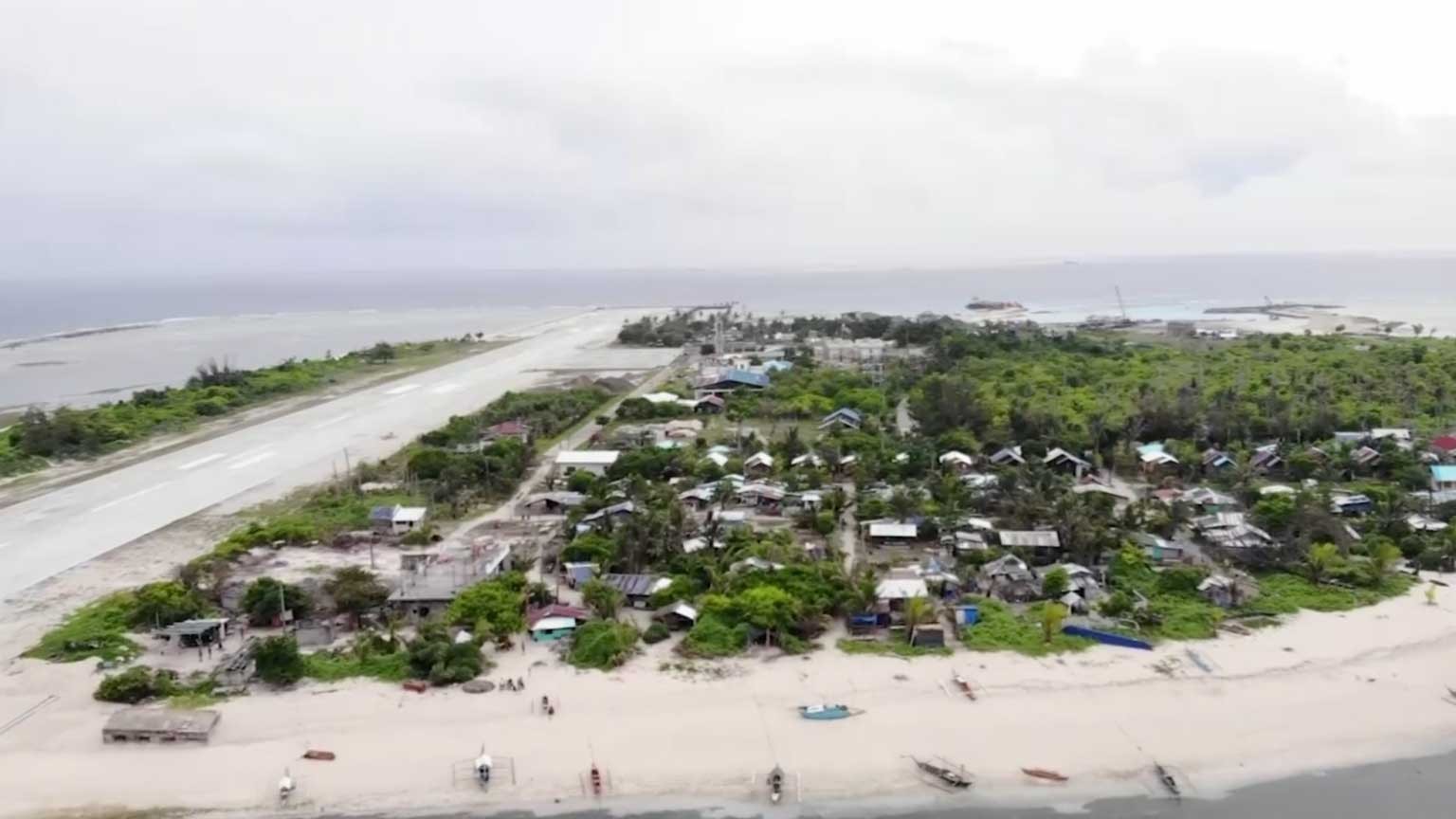Then one day, a handful of much larger Chinese fishing vessels appeared on the horizon, and before long the area was swarming with them.
"They are in our fishing ground," says Cojamco, 48. "We just choose to avoid the place so we won't have problems."
An incident in 2017 convinced Cojamco and his fellow Filipinos it was time to move on. They were fishing around their local sandbar, two nautical miles from Thitu Island, when a Chinese vessel approached in an aggressive manner and blared its horns until the group retreated.
Cojamco says he's too afraid to go back. The Chinese boats are three times the size of the Filipinos' wooden bancas, so Cojamco fears what would happen in the event of a clash. He also worries that the Chinese crews might be armed.
The fishing ground is one of many potential flashpoints in the Spratlys, an archipelago that's the subject of competing territorial claims not just by China and the Philippines, but also Vietnam, Taiwan and Malaysia.
In the past decade, China has staked the most aggressive claim to the islands, building artificial military outposts on coral reefs, and also deploying navy and coast guard vessels in surrounding waters in a way that has impinged on the livelihoods of island dwellers like Cojamco.
In 2016, the Philippines won a case against China in the Permanent Court of Arbitration invalidating Beijing's so-called nine-dash line, a vague delineation supporting its claims to sovereignty over most parts of the South China Sea.
But the courtroom victory has changed nothing for Cojamco and his fellow fishing crews.

Depleted Catch
Cojamco arrived on Philippine-controlled Thitu island in 1999 to work in construction. The peaceful aura of the community convinced him to move his family there permanently.
He eventually turned his hand to fishing, and for more than a decade he lived comfortably off the waters around the local sandbar. Now that he has been forced to fish further away, his catch has plunged.
"We used to catch 10 kilograms in an hour," he says, "but now, even if we fish the entire night, we can only get 5 kilograms. Sometimes, we can't even get that much."

Cojamco is just one of the many people in the local fishing community who are struggling.
Data from the Philippine Statistics Authority shows the haul from Philippine-claimed waters in the South China Sea fell from 295,332 metric tons in 2021 to 275,872 the following year.
Another factor that's hurting the local fishing community, Cojamco says, is the way the Chinese fish. They use so-called superlights ― powerful halogen or metal halide lights submerged below the surface or positioned just above it ― that lure even juvenile fish into their path, where they are caught before they can mature and replenish stocks.
It's just one example of long-term harm being done to the marine environment.
Research by the University of the Philippines Marine Science in 2019 claims Manila is losing around $595 million per year due to Chinese reclamation activities, which have had a lasting effect on habitats and coral reefs in the Spratlys and Panatag Shoal.
Tourism for territorial claims
In a bid to advance its claim over the resource-rich waterway, the Philippine government recently turned to tourism.
In June, Manila launched the Great Kalayaan Expedition, a $2,400, week-long tour of the area that takes visitors through crystal clear waters, along white-sand beaches, and through lush jungles. To facilitate the soft diplomacy initiative, the government lifted a ban on visitors to the Philippine-claimed features in the Spratlys that had been in place to avoid inflaming tensions with other countries.
"These islands are ours so we have the right to use their tourism resources," says tourism officer Earl Fabellar. "A foreigner stepping here is like a statement that we are opening up these islands of ours to the world."
Philippine officials say they plan to hold the tours on a regular basis from next year.
For Cojamco, who has struggled to earn a decent living from his smaller catch, the tourism initiative represents a chance not only to strengthen Philippine sovereignty, but also to directly improve the lives of the roughly 200 residents of Thitu Island.
"We can have tourism jobs here," he says. "The government will earn more, and those improved earnings will trickle down to us, the people."

Philippines-Japan-US Alliance
A week after the first guided tour, the national security advisors of the Philippines, United States and Japan met in Tokyo to discuss three-way cooperation in the region.
Eduardo Ano, Jake Sullivan, and Akiba Takeo said they remain committed to ensuring peace and stability in the Indo-Pacific, even in the face of increasingly aggressive behavior by China.
They discussed opportunities for joint naval exercises in the disputed waters in support of freedom of navigation and broader rules-based order.
Despite these pledges, Cojamco is despondent about the future. He says he's worried that one day he'll lose access not just to the waters near the sandbar, but to the entire Philippine Sea.
Even so, he's not giving up. "[I hope] someday it will be clear that this is our territory. There should be a government-to-government talk. All problems can be resolved through peaceful discussions."

